The Alwalton Walk 1 December 2022 in pictures (and some words)
Photos by Simon Bradford, inaccurate comments and vague ramblings by Tony Attwood
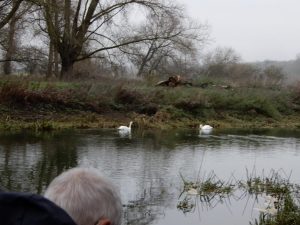 Alwalton the starting and finishing point for the group’s walk is a parish about five miles to the west of Peterborough and is part of Huntingdonshire, one of the grand historic rural counties of England.
Alwalton the starting and finishing point for the group’s walk is a parish about five miles to the west of Peterborough and is part of Huntingdonshire, one of the grand historic rural counties of England.
The village overlooks the River Nene and is close to the route of Ermine Street, which over time became the A1.
Thus it is likely that it was over the centuries an overnight stop for those travelling on matters of state from London to York.
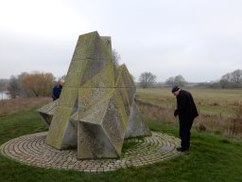
Alwalton is listed in the Domesday Book under the name Alwoltune with just one manor house and 20 households. The lord of the manor received an annual rent of £7.
Now at this point I must admit that owing to a cough and a cold (but not testing positive for covid I hasten to add) your correspondent was not on the walk, and our photographer Simon has omitted to include the detailed report on what the pictures actually show, leaving me (as is generally the case) to make it up as I go.
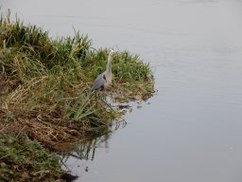
I’d say the structure seen above was certainly alien in origin, probably originating from the star system Lalande 21185, if I’m any judge.
Indeed that structure may have brought seedlings from that star system that then went on to form the first population of the village, the population growing to around 100 people by 1086 when the Doomsday Book was trotted up.
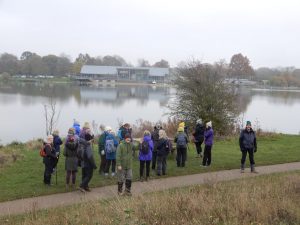 Between 1801 to 1901 the population of Alwalton lept around rather excitedly on one occasion reaching the dizzy heights of 342 as recorded in the ten yearly census of 1861 – quite a leap from the 216 of 1811.
Between 1801 to 1901 the population of Alwalton lept around rather excitedly on one occasion reaching the dizzy heights of 342 as recorded in the ten yearly census of 1861 – quite a leap from the 216 of 1811.
Alwalton is a conservation area with a number of listed buildings, the most important of which are the Norman Church of St Andrew’s and the Elizabethan Manor House. Alwalton Hall was built for the 4th Earl Fitzwilliam.

Sir Henry Royce (1863 to 1933), who with a certain Mr Rolls created the Morris Minor motor car (at least that’s what my notes say but there is a question mark added by my proof reader so that may need checking), was born in the village and his ashes were buried in St Andrew’s Church where a plaque has been placed on the wall and on the floor, beneath which his ashes were buried. It is reported that his remains were originally buried in 1933 beneath a statue of him at the Rolls-Royce works in Derby but in 1937 his urn was removed and brought to Alwalton, although the reason is not revealed by my source.
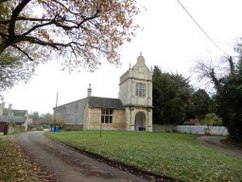

And thus the walk progressed and eventually everyone found their way back, as is symbolised through the final picture below of the backs of everyone walk away.
You have to admit it is rather cleverly staged.
Please don’t forget that if you are on a walk your pictures would be most welcome for publication here, and if you wish to avoid my writing a rather silly commentary alongside your pictures you could always send me your own details of what the pictures show, along with a clear note saying “please do not add any other information no matter how informative or evening amusing you might think it to be.”
Actually, it looks like a super walk and I’m sorry that my cough and cold stopped me being there.